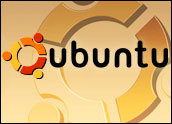
Sun Microsystems, one of the largest server makers, announced that it would increase the number of products certified for use with Ubuntu Linux, one of the fastest growing open source operating systems.
The upcoming expansion — which is expected to be detailed in the coming days — is the latest development in the two-year relationship between Sun and Canonical, which reaches back to the 6.06 LTS (long-term support) release in 2006, which was certified for some Sun systems. By 2007, the Java stack was included with the Ubuntu 7.04 release, said Barton George, Sun Microsystems’ open source community manager.
To Market
The announcement is an important step for Canonical, Ubuntu’s corporate sponsor, as it moves into the commercial enterprise market.
Although Linux servers represent just 12 percent of the market, revenues reached US$2 billion in the fourth quarter last year, the largest single-quarter growth for the open source market to date, according to research analyst firm IDC. As the market continues to diversify — each of the three systems reached double-digit revenue growth, the Linux market is expected to grow.
“Growth in the top three operating-system segments of the server market, by revenue — Windows, Unix and Linux — underscores the diversity of the workloads that are running in customer sites, and the continuing demand for all three operating environments in the worldwide server marketplace,” said Jean S. Bozman, research vice president with the IDC Enterprise Computing Group.
That market growth, though, hasn’t been enough to turn Ubuntu into a viable commercial operating system.
The expansion of Ubuntu’s certification process with Sun — the fourth largest server vendor — gives Canonical a potential foothold in the marketplace as it begins the long climb to try to overtake Red Hat and Novell, the two largest Linux server service providers.
Alternate Pathways
Canonical’s biggest asset is that unlike other Linux-supported operating systems, anyone can download and install Ubuntu without paying for service. If an IT department decides to manage the operating system, there is no cost to the company. The goal: reach a critical mass of commercial users who grow to the point where it serves their best interest to pay for service.
That gives companies the opportunity to choose between a more traditional, corporate approach or a try-before-you-buy model.
“In essence, you can’t start using Red Hat without paying for it,” Bernard Golden, CEO of Navica, an open source management company based in San Carlos, Calif., told LinuxInsider. “You have to sign up for a support program. It’s a very corporate approach. With Ubuntu, you can download and install it without paying for it. Maybe you start off using the Ubuntu server and realize that you need support for it.”


















































